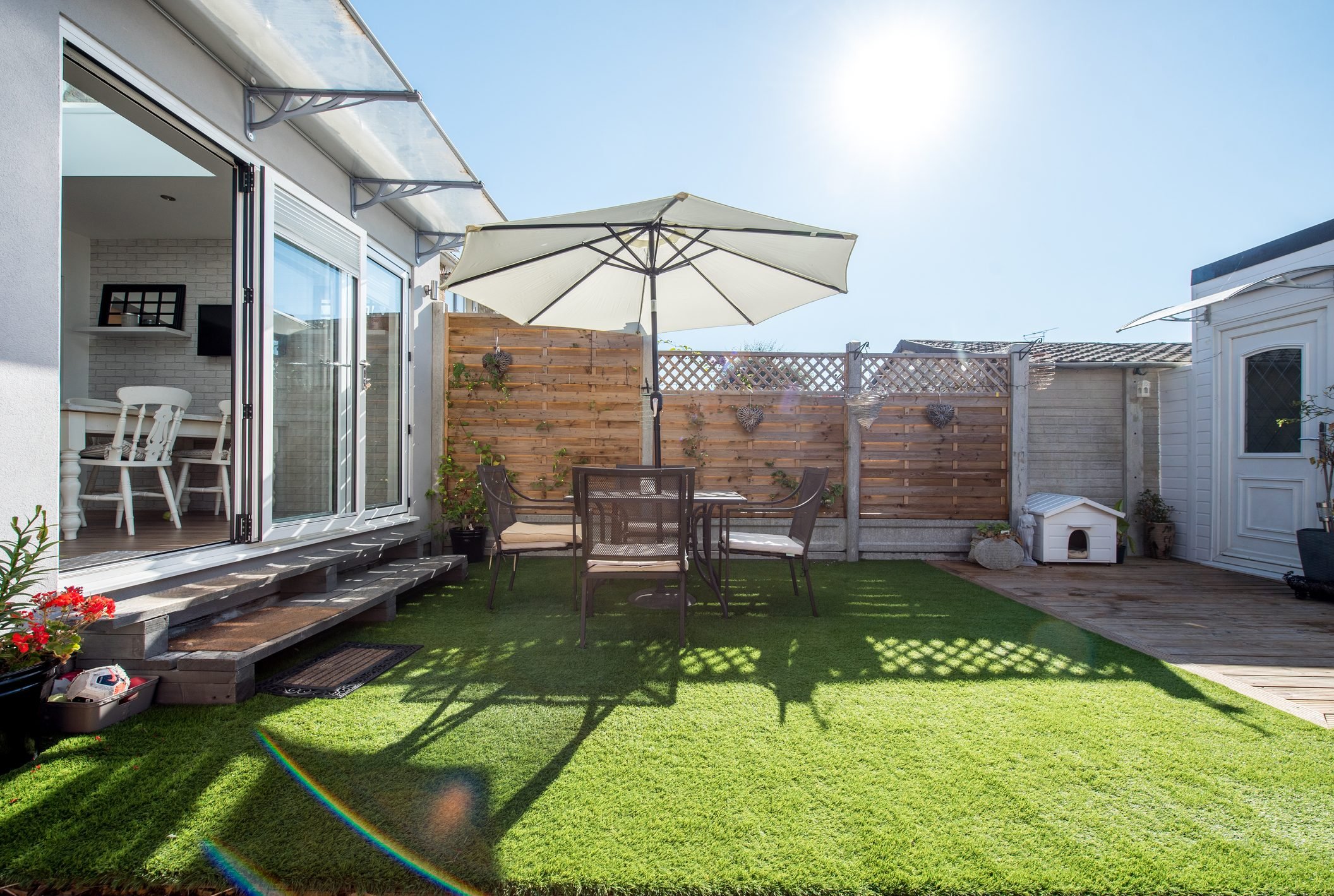A lush, green-all-year artificial grass lawn needs little TLC to keep looking great. Our expert explains best practices for max longevity.

Do You Have to Clean Artificial Grass?

Thinking about making the switch to artificial grass? Maybe you have a shady yard and gave up trying to grow grass. Or after years of hauling out the mower every week, you’re ready to throw up your hands and say “Enough!”
You’re not alone.
Industry experts say the residential artificial grass market is booming, and no wonder. Artificial grass gives you a green lawn all year round in any weather conditions. Even with slightly slower growth due to COVID-19 and supply chain disruptions, the artificial turf market is expected to rise nearly 9% every year through 2027.
On This Page
Do You Have To Clean Artificial Grass?
Joe Raboine, vice president at Belgard, explains how to maintain your artificial grass to keep it looking as fresh as the day you installed it.
“Yes, you should keep turf blown off and cleaned,” Raboine says. Regardless of the style, type, thickness and material, cleaning it regularly will keep it looking good for 20 years or more.
How To Clean Artificial Grass
Artificial grass is low maintenance, but not zero maintenance. Here’s how to keep yours in top shape:
- Blow it off: Grab a leaf blower to regularly remove leaves, sticks and other debris. This prevents organic matter from breaking down and becoming embedded in the thatch, where it’s more difficult to remove.
- Clean up spills: Pick up pet waste and food immediately if you can. Spray with water or wipe with a paper towel if any residue remains.
- Hose it down: Lightly rinse turf regularly with a garden hose to remove dust, dirt and debris. If your pet uses the turf as a bathroom, rinse the area often and apply odor-neutralizers as needed.
- Remove sticky stuff: Sap, gum and other sticky residues can be cleaned with a mild detergent or a 50/50 vinegar and water mixture. Use a soft-bristled brush only, and always rinse well.
If even this regimen is more than you want to deal with, some lawn services will do it for you. A lawn service owner I know in the Dallas area takes care of three artificial grass lawns. Multiple factors affect the cost, but he says it mostly comes down to tree cover. If you have a lot of trees, then lots of leaves and acorns need to be removed.
Plus, he says, acorns and other debris are much more noticeable on artificial grass, so his clients often request more frequent service. Because of this, he charges a little more for artificial grass lawns. But it’s worth a call to a local lawn service because every yard is different.
How To Keep Artificial Grass Looking Good
Just like the carpeting in your house, artificial grass is made to be lived on, Raboine says. Eat, drink and play to your heart’s content.
All that action means high-traffic areas may start to look a little flat or worn, though. To keep that to a minimum, grab a rake. Yep, that same plastic leaf rake you use for natural turfgrass works well on the fake stuff, too.
“Raking the turf against the grain regularly with a plastic rake helps keep the fibers fresh and helps prevent matting,” Raboine says. (Never use a metal rake.) Besides raking, cleaning up spills and blowing off the leaves, artificial grass lawns don’t need much upkeep.
When Does Artificial Grass Have to Be Replaced?
“Replace turf when the blades become damaged or show signs of heavy wear, especially in high-traffic areas where the pile height may become much shorter,” Raboine says. “Discoloration in areas of direct sun and harsh weather is a good indicator that it may be time to replace turf as well.”
If you only have a few spots that look bad, you don’t have to replace the whole lawn. Raboine suggests socking away some remnants or extra rolls during installation in case you need to patch damaged areas later. That way, the product will match. Try to keep the pile going in the same direction, though. Raboine says it should be pretty easy to tell.
“Most turfs should last at least 20 years with maintenance,” Raboine says.
If you do need to replace the whole lawn, the main expense — prepping the ground below the turf — already happened during the initial installation. “Once that is in, replacing the artificial grass should be much less costly than the initial installation,” he says.




















